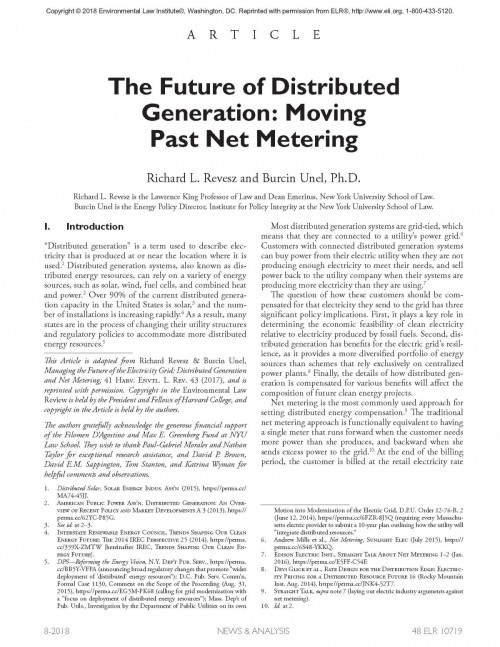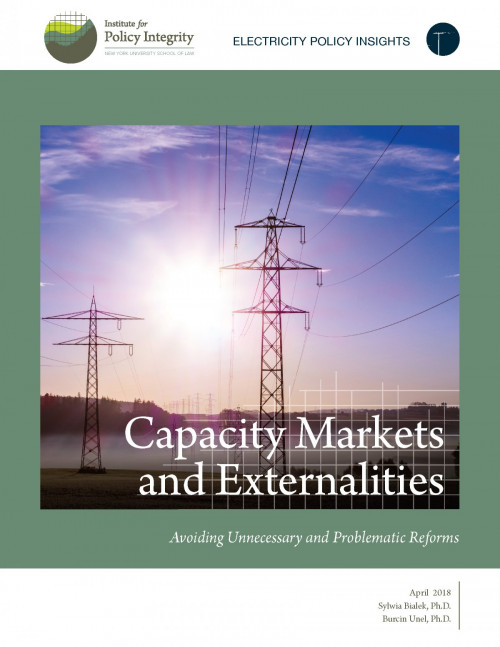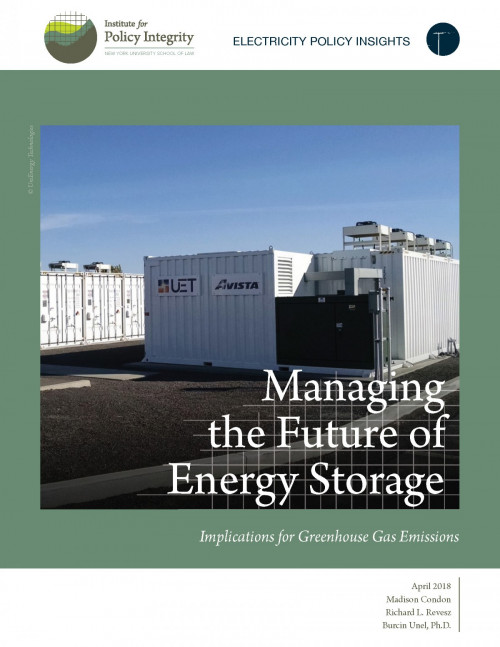-

The Future of Distributed Generation
Moving Past Net Metering
This article provides an overview of the benefits and the costs of distributed generation and highlights the analytical flaws and missing elements in the competing positions and in most existing policies. We propose an alternative approach that recognizes the contributions to the electric grid of both utilities and distributed generators. The article is excerpted and revised from a longer academic article, “Managing the Future of the Electricity Grid: Distributed Generation and Net Metering,” which was selected by Environmental Law Reporter as one of the five best environmental law articles published in the 2017-2018 academic year.
-

Toward Resilience
Defining, Measuring, and Monetizing Resilience in the Electricity System
Grid resilience—generally, the electric grid’s ability to resist/absorb, manage, quickly respond, and recover from/adapt to high-impact, low-probability external shocks—has been a concern for electric utilities and energy planners for decades. While recent extreme weather and cyber security concerns have prompted the federal government to pursue policies that support coal and nuclear power plants, a more systematic focus on resilience will lead to very different solutions than what has been proposed by the Department of Energy. Our report aims to assist policymakers in understanding grid resilience and evaluating potential interventions aimed at improving grid resilience.
-

How States Can Value Pollution Reductions from Distributed Energy Resources
DERs are a growing part of the U.S. electric system and many state electric utility regulators are looking to more accurately compensate them by paying for a variety of the benefits that these resources provide. Most states are currently focusing on energy and distribution-level benefits, but this approach overlooks the environmental and public health impacts of DERs. Even though some states like California and New York have been working on analyses that include environmental attributes of DERs, few regulators have attempted a thorough evaluation of the environmental and public health benefits. Our report, Valuing Pollution Reduction, lays out a practical methodology for calculating the E value, the highlights of which are captured here. Specifically, this issue brief describes how to appropriately value environmental and public health benefits by monetizing the economic, health, and climate damages avoided emissions would have caused. State utility regulators can use the steps described here, weighing tradeoffs between accuracy and administrability, to implement their own program to holistically compensate DERs.
-

Capacity Markets and Externalities
Avoiding Unnecessary and Problematic Reforms
Many states are taking action on climate change by paying zero- and low-emitting electricity generators for avoiding the emissions that fossil-fuel-fired resources would otherwise emit. These “externality payments” help level the playing field between emitting and non-emitting generators. Critics of these policies argue that these payments might negatively affect the efficiency of wholesale electricity markets by reducing capacity prices, which heavily affect how generators enter and exit the market. Our report shows why the premises underlying recent reforms, which seek to shield capacity markets from the potential price impact of pollution externality payments, are flawed.
-

Managing the Future of Energy Storage
Implications for Greenhouse Gas Emissions
Many policymakers assume that increasing deployment of energy storage will automatically reduce greenhouse gas emissions, in part by helping to integrate renewable energy resources with intermittent and variable generation. This report, published in the Harvard Environmental Law Review, explores situations in which energy storage systems can in fact lead to increased emissions, and offers reforms to correct for poor incentives while ensuring that energy storage can provide the maximum benefit possible to the grid.
Viewing all publications in Electricity
